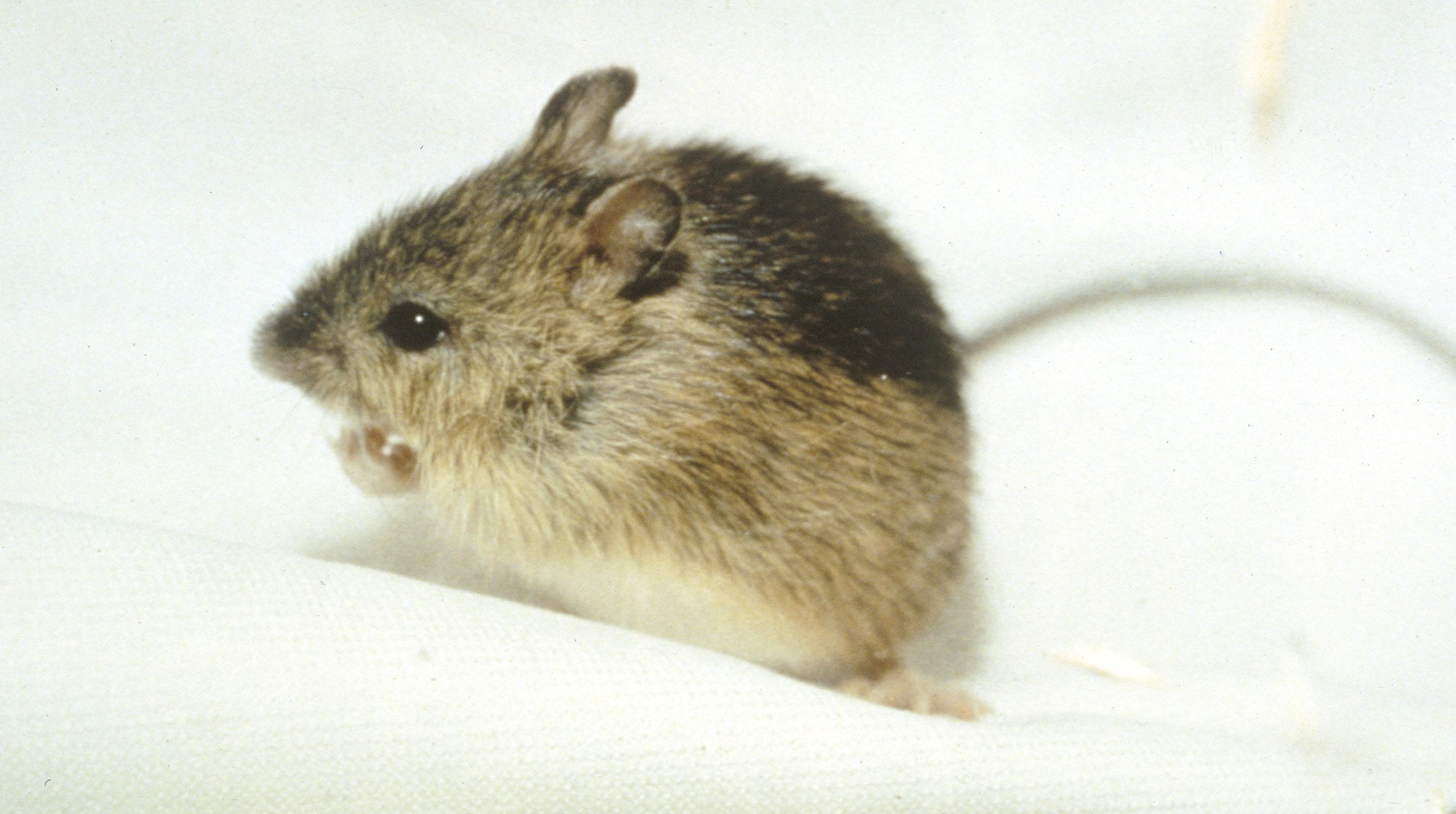SCIENTIFIC NAME:
Zapus hudsonius (Zimmermann)
OTHER NAMES:
None.
STATUS:
Poorly known. Populations may be declining, but no recent surveys. HIGH CONSERVATION CONCERN.
DESCRIPTION:
A medium-sized (length = 185-225 mm [7.4-9.0 in.]; weight = 12-28 g [0.5-1.0 oz.]), long-tailed, mouse with hind legs conspicuously longer than forelimbs, and large hind feet (after Linzey 1998). Long tail (110-150 mm [4.4-6.0 in.]) distinctly bi-colored and sparsely haired. Upper body coloration usually brown to yellowish brown laterally, transitioning to black dorsally, often with a dark brown or black mid-dorsal stripe extending the length of the body from the nose to the base of the tail. Ventral surfaces white to cream or yellowish white. Ears dark brown with pale narrow edges. Upper incisors curved, orange to yellow, and deeply grooved on anterior surface.
DISTRIBUTION:
In United States, occurs from Montana, Wyoming, and Colorado eastward across the Midwest and Northeast (Whitaker and Hamilton 1998), including Maryland, Delaware, Virginia, and West Virginia. In the Southeast, known from the Appalachian Mountains, Appalachian Ridge and Valley, Appalachian Plateaus, and Coastal Plain physiographic regions of Kentucky and Tennessee. To the east, populations have been reported from lower elevations (less than 914 m [3,000 feet]) in the southern Blue Ridge Mountains of Tennessee, North and South Carolina, and northern Georgia, and the Atlantic slope Piedmont region of North and South Carolina, and central Georgia (Webster et al. 1985). In Alabama, known from only four localities in the east and central portion of state; two in Chambers and one each in Lee and Chilton Counties (B. Hart, pers. comm.).
FEEDING HABITS:
Seeds, grasses, fruits of some woody shrubs, insects and fungi are consumed.
HABITAT:
Throughout distribution seems to prefer wet meadows, marshes, and open fields, grassy seeps and bogs, and woodland glades, often in proximity to swamps, streams, and ponds (Whitaker and Hamilton 1998).
LIFE HISTORY AND ECOLOGY:
Little known in Alabama or elsewhere across southern portion of distribution. Farther north, known from populations isolated within areas of suitable habitat. Like many other small mammals, strongly nocturnal, and rarely encountered in the field. Throughout much of distribution generally emerges from hibernation in early spring to feed on a variety of insects, seeds, and fungi. Mating occurs soon after emergence with typical litters produced April-August containing three to seven young. Gestation period ranges from 17 to 21 days. Young usually weaned four to five weeks after birth. In northeastern United States, three peaks of breeding activity usually occur per year. Wild specimens have been known to survive for two or three years, and some captive individuals have lived as long as five years (Quimby 1951, Jones 1982). Known predators include hawks and owls, foxes, weasels, mink, snakes, and housecats.
BASIS FOR STATUS CLASSIFICATION:
No reported collections from Alabama since the mid- to late 1970s (T. L. Best and B. Hart, pers. comm.). Consequently, ecology, distribution, and current status are, at best, poorly known.
Author:
J. Ralph Jordan, Jr.






